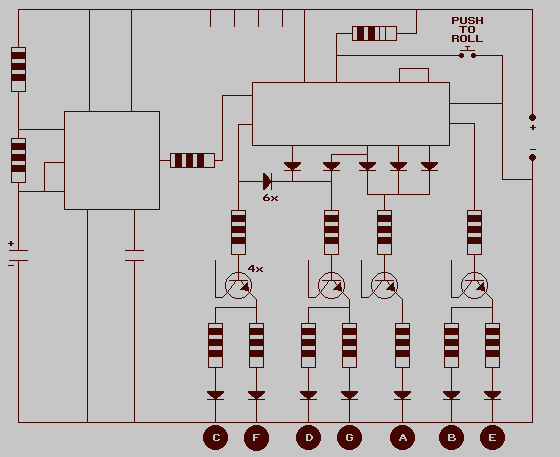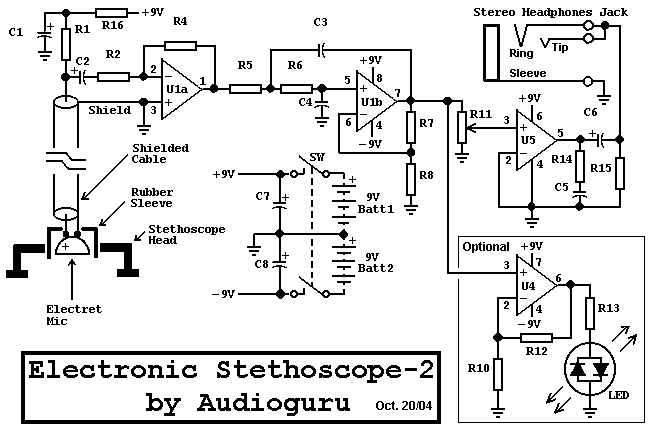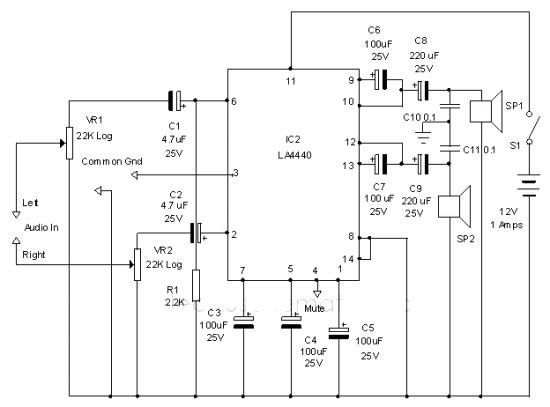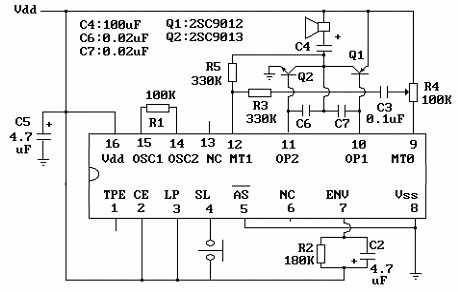
Electronic Dice

The 555 timer IC is connected for Astable Operation, the clock pulses are fed to the 4017 IC via the 10K resistor. The 4017 is a 10 stage counter, output 6 (pin 5) is connected to RESET (pin 15), thus giving us a 6 stage counter, outputs 0 to 5. 6 of the LEDs are connected as 3 pairs, thus requiring 4 different signals, these signals come from the 4 transistors, which in turn are connected to the necessary outputs of the 4017. Where a transistor is operated from more than one output, diodes are used to avoid a short circuit situation between outputs. Pin 13 of the 4017 (INHIBIT) is connected to +ve via a 100K resistor to stop the counter from advancing, however pressing the ROLL button will connect pin 13 to -ve and allow the counter to advance, hence, throwing the dice.
The circuit utilizes a 555 timer integrated circuit (IC) configured in astable mode to generate a continuous series of clock pulses. These pulses are transmitted to a CD4017 decade counter IC through a 10KΩ resistor, which serves to limit the current flowing into the counter. The CD4017 is a versatile 10-stage binary counter that sequentially activates its output pins (Q0 to Q9) with each clock pulse received. In this specific configuration, the output pin 5 (Q6) is linked to the reset pin (pin 15) of the CD4017. This connection effectively restricts the counter's operation to only six states (outputs 0 through 5), allowing for the creation of a six-sided dice simulation.
To visualize the output states, six light-emitting diodes (LEDs) are arranged in pairs, resulting in three pairs of LEDs. Each pair corresponds to specific outputs from the CD4017, and four transistors are employed to control these pairs. The transistors act as switches, turning the LEDs on or off based on the output from the counter. In instances where a single transistor is driven by multiple outputs, diodes are integrated to prevent potential short circuits, ensuring that the outputs do not interfere with one another.
Additionally, pin 13 of the CD4017, designated as the inhibit pin, is connected to the positive voltage supply through a 100KΩ resistor. This arrangement effectively disables the counter from advancing its state under normal conditions. However, the circuit includes a manual ROLL button which, when pressed, connects pin 13 to ground (negative voltage). This action permits the counter to resume its operation, thereby simulating the rolling of a dice. The overall design provides a simple yet effective means of generating random outputs, suitable for various applications requiring a randomized selection mechanism.The 555 timer IC is connected for Astable Operation, the clock pulses are fed to the 4017 IC via the 10K resistor. The 4017 is a 10 stage counter, output 6 (pin 5) is connected to RESET (pin 15), thus giving us a 6 stage counter , outputs 0 to 5.
6 of the LEDs are connected as 3 pairs, thus requiring 4 different signals, these signals come from the 4 transistors, which in turn are connected to the nescessary outputs of the 4017. Where a transistor is operated from more than one output, diodes are used to avoid a short circuit situation between outputs.
Pin 13 of the 4017 (INHIBIT) is connected to +ve via a 100K resistor to stop the counter from advancing, however pressing the ROLL button will connect pin 13 to -ve and allow the counter to advance, hence, throwing the dice. 🔗 External reference
The circuit utilizes a 555 timer integrated circuit (IC) configured in astable mode to generate a continuous series of clock pulses. These pulses are transmitted to a CD4017 decade counter IC through a 10KΩ resistor, which serves to limit the current flowing into the counter. The CD4017 is a versatile 10-stage binary counter that sequentially activates its output pins (Q0 to Q9) with each clock pulse received. In this specific configuration, the output pin 5 (Q6) is linked to the reset pin (pin 15) of the CD4017. This connection effectively restricts the counter's operation to only six states (outputs 0 through 5), allowing for the creation of a six-sided dice simulation.
To visualize the output states, six light-emitting diodes (LEDs) are arranged in pairs, resulting in three pairs of LEDs. Each pair corresponds to specific outputs from the CD4017, and four transistors are employed to control these pairs. The transistors act as switches, turning the LEDs on or off based on the output from the counter. In instances where a single transistor is driven by multiple outputs, diodes are integrated to prevent potential short circuits, ensuring that the outputs do not interfere with one another.
Additionally, pin 13 of the CD4017, designated as the inhibit pin, is connected to the positive voltage supply through a 100KΩ resistor. This arrangement effectively disables the counter from advancing its state under normal conditions. However, the circuit includes a manual ROLL button which, when pressed, connects pin 13 to ground (negative voltage). This action permits the counter to resume its operation, thereby simulating the rolling of a dice. The overall design provides a simple yet effective means of generating random outputs, suitable for various applications requiring a randomized selection mechanism.The 555 timer IC is connected for Astable Operation, the clock pulses are fed to the 4017 IC via the 10K resistor. The 4017 is a 10 stage counter, output 6 (pin 5) is connected to RESET (pin 15), thus giving us a 6 stage counter , outputs 0 to 5.
6 of the LEDs are connected as 3 pairs, thus requiring 4 different signals, these signals come from the 4 transistors, which in turn are connected to the nescessary outputs of the 4017. Where a transistor is operated from more than one output, diodes are used to avoid a short circuit situation between outputs.
Pin 13 of the 4017 (INHIBIT) is connected to +ve via a 100K resistor to stop the counter from advancing, however pressing the ROLL button will connect pin 13 to -ve and allow the counter to advance, hence, throwing the dice. 🔗 External reference





